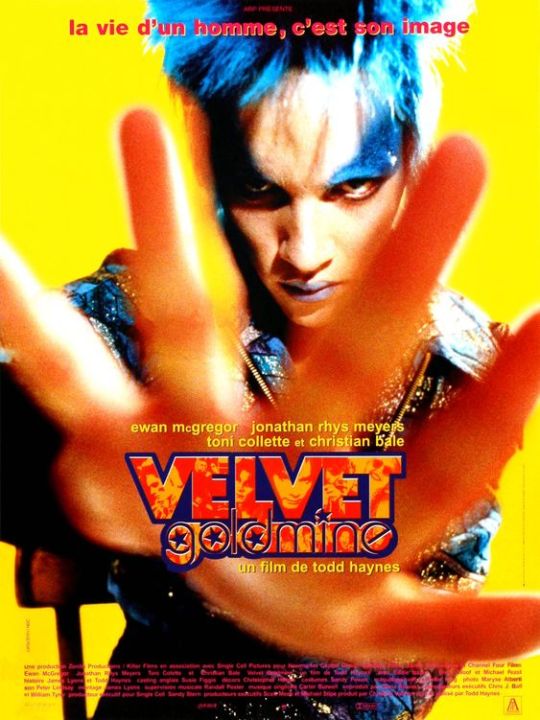Don't wanna be here? Send us removal request.
Text
Paparazzi footages
No fandom is ever truly dead as long as there are writers out there willing to put in the time and effort to keep the spirit of the fandom alive. Let’s hear it for @onlybrianslade @offieryspirits for keeping the Velvet Goldmine love going!
~Lily

29 notes
·
View notes
Text
Participatory culture and viral videos

Image credits: Make a Meme
In the chapter Social Media as Participatory Culture from Christian Fuchs’s book Social Media: A Critical Introduction, the author discusses participatory culture and its relation to democracy. Fuchs starts by refuting the key arguments of the ideologist of participatory culture, Henry Jenkins, as well as other like-minded scholars, who believed that the creative power given to individuals within the participatory culture is, first and foremost, empowering on an individual level. For Jenkins, social media are the ultimate manifestation of participatory culture that promotes active creation and circulation of content and interaction between users. Fuchs’s fundamental points that immediately counteracts all positive aspects of participatory culture defined by Jenkins is that Internet users are exploited by ever-expanding capitalism that only contributes from all forms of sharing economy (when one company acts as a middleman between users and a service by monetizing the byproduct of this interaction) on the Internet. Fuchs states that Jenkin’s “reductionist” attitude sees only one side of the coin, namely the cultural one, while completely ignoring the political implications behind participatory culture as well as the questions of ownership and decision-making. And because social media users neither participate in the business model of the platforms nor take part in the decision-making nor have any control over these platforms, they are automatically exploited by the social media companies that, consequently, a priori denies all social media’s pretenses to participatory culture. Moreover, creativity that is so highly praised by Jenkins, for Fuchs is an integral part of the exploitation of free digital labor by corporations that dominate the Internet.
Jean Burgess’s essay “All Your Chocolate Rain Are Belong to Us?”: Viral Video, YouTube, and the Dynamics of Participatory Culture discusses the phenomenon of viral videos (“video clips that become highly popular through rapid, user-led distribution via the Internet”) on the example of two viral videos from YouTube: “Chocolate Rain” and “Guitar”. The author sees viral videos as manifestations of culture within social networks but the value of such videos is determined by their “spreadability”. Both videos have textual hooks that made them successful and, therefore, viral and they become recognizable because of their performative quality and frequent repetition within cultural environments. The main differences between “Chocolate Rain” and “Guitar” are that the former enjoyed its popularity for a significantly shorter amount of time than the latter one because it relied on the knowledge of the inside joke that quickly “expire” by becoming mainstream whereas “Guitar” video encouraged participation, repetition, and ongoing engagement from users which solidified its longevity. All of these characteristics are also illustrated in a 2012 viral video that is still known to this day - PSY’s Gangnam Style. Upon its release, the video became an immediate success because of the catchy beat, comic video clip but even more so because of the unique dance moves that were heavily copied among ordinary Internet users, contributing to the long-lasting popularity of this 2012 hit.
youtube
0 notes
Text
On memes

Image credits: Facciabuco
In her book Memes in Digital Culture Limor Shifman explores Internet memes in the realm of digital culture by explaining the concepts of memes and viruses and what makes them so successful.
The phenomenon of memes was first discovered back in the 1970s by Richard Dawkins who defined memes as “small cultural units of transmission, analogous to genes, that spread from person to person by copying information”. While the very word “meme” has a Greek origin, the concept of memes is very similar to Darwin’s theory of evolution in biology, especially to that of genes and viruses. Therefore, the main qualities of genes such as replication, adaptation, and fitness were aptly applied to the concept of Internet memes and culture in general. Moreover, unlike genes and viruses which activity and spreadability are hard to control (in a natural way, at least), in the meme theory people are active actors and, therefore, can intentionally influence the direction of memes. This feature of memes also connects them to folklore, but a rather (post)modern version of folklore because like songs and tales, memes have become part of the larger culture via participatory culture.
Memes can be spread successfully if they incorporate the qualities of longevity, fecundity, and copy fidelity. The same set can be applied to contemporary Internet memes because the very innate qualities of the Internet allow memes to spread faster, more pervasively, in greater quantities, and reach more people. However, even though Internet memes share a lot with Dawkins’ memes, Shifman provides the exact definition for the former by saying that Internet memes are “a group of digital items sharing common characteristics of content, form, and/or stance which were created with awareness of each other, and were circulated, imitated, and/or transformed via the Internet by many users”. Moreover, the success behind Internet memes can be explained by the economy-driven logic that is based on “attention economy” which mean that the main focus is placed on people’s attention to certain information. Another factor that defines the success of memes is “networked individualism” that allows people to express their uniqueness while connecting with others based on shared views. Lastly, the cultural and aesthetic logic of participation underpins the success of memes since memes are not confined by the source of their production and distribution, but on the contrary, they become part of common culture and are constantly being “recycled” by other users.
Shifman also offers her own explanation behind the success of memetic and viral videos by presenting the “six Ps”, or six components that increase virality and propagation of content: positivity, provocation of high-arousal emotions, participation, packaging, prestige, and positioning. The success of mimetic content is further distinguished into mimetic videos and mimetic photos. Mimetic videos, for instance, usually include ordinary people, flawed masculinity, humor (including incongruity, superiority, and playfulness), simplicity, repetitiveness, and whimsical content. In this sense, TikTok can be viewed as a platform that embodies the essence of video memes since the majority of viral videos from TikTok are created and/or feature ordinary people that use different types of humor for creating their videos such as the video by @itscaitlinhello who takes on a Zoom coworker.
youtube
Flawed masculinity presented with a sense of humor by an ordinary person can also be seen from a video by Nathan Apodaca @420doggface208 who skateboards while listening to Fleetwood Mac’s “Dreams”.
youtube
0 notes
Text
Platform Cooperativism
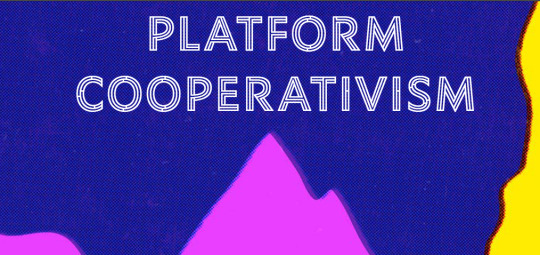
Image credits: SUPERMARKT
The idea behind platform cooperativism was coined by scholar Trebor Scholz as a way to counterbalance and preferably surpass platform capitalism (dominance of monopolizing companies that are operating as digital platforms) and sharing economy (when one company monetizes the sharing of resources and acts as an essential middleman between users and people who can perform a certain service). However alluring the sharing economy might seem because of its innovative technical features, convenience, and accessibility, it has been proven to be detrimental for the people working within this type of economy. Some of the most evident drawbacks of the sharing economy and digitized “jobs” are discriminated, unprotected, underpaid, and overworked workers who do not even have an official employee status that would guarantee them a decent amount of wage, old-age pension, stable workplace, and an overall sense of belonging. Moreover, sharing economy, specifically in the United States, not infrequently operates illegally and nullifies federal law by ignoring workers’ rights and minimum-wage standards as well as evading taxes. Amazon, Uber, and TaskRabbit are by far the most prominent examples of such worker exploitation. Still, aggressive platform capitalism is subject to change and Scholz offers a plausible alternative to sharing economy in his essay Platform Cooperativism which takes on a traditional cooperative model and tweaks it adjusting coops to the field of digital employment.
The platform cooperativism stands, in the first place, for fundamental reorganization and democratization of all spheres of digital workplace starting from ownership to governance to solidarity. The main appeal of cooperatives lies in their ability to provide stable jobs and reliable social protections as opposed to traditional extractive models. According to Scholz, platform cooperativism can be created under three core principles: 1) adopting the technology of successful applications like Uber, TaskRabbit, Airbnb, however, with a different type of ownership; 2) solidarity of unions/municipalities/coops etc; 3) relying on innovation and efficiency while benefitting everyone. Furthermore, there are six main types of cooperatives existing in the digital sphere right now: online labor brokerages and market places, city-owned platforms (mainly within hotel and accommodation industries), produser-owned platforms (a hybrid between producers and users who can co-own and sell their creations), union-backed labor platforms (mainly concerns taxis), cooperatives from within (using extractive companies’ infrastructure for independent enterprises), and the platform as a protocol (facilitating peer-to-peer interaction only by protocols). Lastly, Scholz lists ten principles for platform cooperativism that are ownership, decent pay and income security, transparency and data portability, appreciation and acknowledgment, co-determined work, a protective legal framework, portable worker protection and benefits, protection against arbitrary behavior, rejection of excessive workplace surveillance, and the right to log off.

Image credits: Innovation Montreal
Eva is a Montreal-based taxi cooperative that embodies all the values and principles of Scholz’s platform cooperativism. It became highly successful in its native Quebec because the income and taxes generated by the companies are circulated within the province’s economy and because of Eva’s treatment of its employees that contrasts starkly with other taxi apps like Uber. However, Eva is not the only thriving taxi cooperative. For instance, Paris has its own taxi coop, called VTC Cab that aims to represent its local community. In America, taxi coops like Union Taxi in Denver, PDX Yellow Can in Portland, and Juno in New York City are also notable examples of platform cooperativism.
0 notes
Text
Platform Capitalism
Platform Capitalism became a seminal literary work by Nick Srnicek. In the second chapter of this book the author addresses the companies, called platforms, that rose to prominence because of their data extractive strategies, and explains what types of platforms are there.
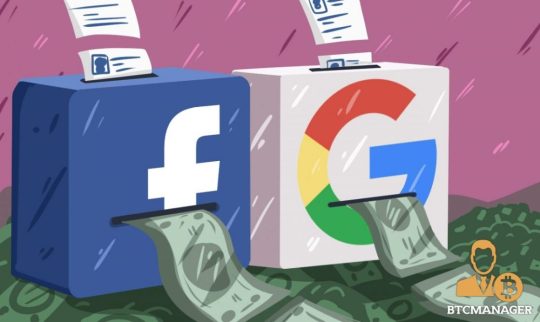
Image credits: BTC Manager
In this day and age, it is clear that raw data became the new oil which in turn created the new dominant class - the one which has ownership over information. However, unlike oil that has to be extracted from nature, data are extracted from user activity on the Internet. Logically, the dominance and profitability of data made data the cornerstone of contemporary capitalism and a new, relevant business model was created, namely the platform.
In the most basic terms, platforms are “digital infrastructures that enable two or more groups to interact” but there are four core characteristics that define the platform:
Platforms act as intermediates bringing different users together and have various tools that allow users to come up with their services, products, marketplaces.
Platforms rely on “network effects” - the more users use a platform, the more other users this platform can attract, and the more profitable the platform is.
Platforms use cross-subsidization that means if one arm of a company reduces the price for its service or product, the other arm raises it.
Platforms embody politics which means that they control and manage all interactions that happen within a platform.

Srnicek also makes a distinction between five types of platforms:
Advertising platforms – extract data from users, analyze it, and sell the analyzed information to advertisers. This type of platform also heavily relies on surveillance, constant tracking, and recording of users’ activities via cookies and other tools.
Cloud platforms – have digital software and hardware that are rented by other companies. These platforms provide the basic infrastructure for digital industries which allows the collection, storage, and analysis of data, maintenance of company’s servers, and logistics.
Industrial platforms – build hardware and software needed for transitioning from traditional manufacturing to Internet-based services. These platforms are responsible for inserting sensors, computer chips, and trackers during the production process that can all be linked via the Internet. One of the examples of industrial platforms is a baby monitor that allows to track babies’ activities while parents need to be away. While traditional baby monitors acted as radios and, therefore, allowed to only listen to sounds made by a baby, the range of contemporary devices was expanded to video baby monitors that allow seeing what a baby is doing, movement monitors that go with sensors that track baby’s movements, and even smartphone applications for a more handy experience.
Product platforms – transform a traditional object into a digital service by collecting a subscription fee. It is a rather traditional business model that, however, was expanded to new sectors such as housing, taxis, and hairdressers.
Lean platforms – decrease the ownership of physical assets and profit from reducing costs. This type of platform operates through a hyper-outsourced model where both workers, fixed capital, maintenance costs, and training are outsourced. Basically, the only thing that lean platforms own is the control over the platform and a monopoly rent from it. The inherent quality of lean platforms is also responsible for the rise in precarious employment because these platforms outsource independent contractors and freelancers rather than full-time employees.

Image credits: Pampik
0 notes
Text
Colonialism and Orientalism
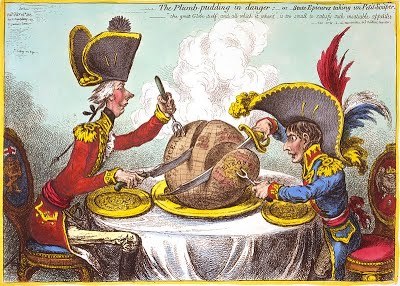
Image credits: The Clyde Fitch Report
In the article Data orientalism, Dan M. Kotliar explores the hegemony of Western algorithmic gaze on non-Western countries and cultures, also known as data colonialism, by exploring its parallels to historical colonialism. The first major similarity between the traditional notion of colonialism and data colonialism is that both focus on extracting knowledge about the Other, meaning non-Westerners, which allows colonizers to justify their power and control the Others more easily. And as algorithms are never neutral parties, knowledge about people is not neutral either and, on the contrary, always reflects specific socio-cultural context where it was produced.
In this article, Kotliar focuses on data colonialism as seen by the example of Extractive, an Israeli tech company that despite its Middle Eastern location is essentially Western-minded. Extractive’s role is to create user profiling algorithms for companies in East Asia and the article shows how inconsistent is Extractive’s stance regarding its expansionist policies. First of all, the Israeli company insists that their algorithms are ultimately “language-agnostic” and universal, which means that they do not rely on language, nationality, and culture. Moreover, Extractive algorithms are based on the Facebook database which means that data profiling of Extractive relies on people’s online activities and rather neglects cultural and lingual differences.
Another aspect of Extractive’s user profiling procedures contradicts their previously stated “culture-agnostic” position. The tech company uses essentially Western nicknames to categorize users (e. g. hipster, techie, globetrotter) again neglecting the fact that these code names might not reflect the demographics and lifestyles of East Asia which consequently highlights Extractive’s culture-specific perspective. This approach once again proves the data colonizing position that attempt to make the Others knowable and controllable by imposing colonizer’s categories on them.
Lastly, Extractive presents the East Asian population as gullible, weak, backward, and corrupt which seems to prove the “colonial imagination” that lies in seeing the Others through the old colonial perspective.
Anyhow, data colonialism is only one manifestation of a larger algorithmic power and it is impossible to deny that in contemporary digital age, algorithms immensely influence our lives while remaining largely unnoticed. My personal experience with algorithms was when I was looking through an online clothes store on my mother’s phone. Interestingly, a couple of minutes after I put my mother’s phone away and opened Instagram on my own phone the first ad that popped up was from that same online shop I have just looked through, and what is more, it advertised exactly those models of clothes that I opened on the shop’s website. This situation made me realize once again that algorithms are omnipresent and unlimited.

0 notes
Text
Power to algorithms!

Image credits: GCF Global
In Algorithm Tarleton Gillespie discusses various roles and meanings assigned to the word “algorithm”. Despite the algorithm’s contemporary importance in the Western culture, the word takes its origins from the ancient Near East where it was used for mathematical purposes. Today, however, the meaning of algorithm is a lot more diverse and changes according to contexts. Essentially, algorithms consist of variables, steps, and indicators that all functionally interact with each other to address a certain task, or goal. The main difficulty with algorithms arises from the fact that they build on existing data that is supplied by either designers or past users. Therefore, when a new type of data comes up, the algorithm does not recognize it as relevant which can create serious implications for society at large. Algorithm is also used as a synecdoche for the algorithm itself, the model, target goal, training data, application, and hardware. However, because the meaning of algorithm is so obscure and multifaceted algorithm is also regarded as an all-objective tool, separated from companies or individuals that use it. This seeming impartiality of algorithms makes them more credible than humans despite the fact that algorithms were written by people.
David Beer’s chapter Power through algorithm? Participatory web cultures and the technological unconscious examines the role and powers of algorithms within the Web 2.0. environment that is characterized by user-generated content, participation, and collaboration. The first important term used in relation to the algorithm is “new new media ontology” which means a form of living in which information, or algorithms, become active in shaping lifestyles and environments. The term suggests that information intervenes in all aspects of people’s everyday life in an unseen way thus making it “technologically unconscious”. Consequently, this concealed quality of algorithms is actually what empowers them since the majority of decisions made by companies, like automated call centers, are actually made by algorithms. The article also discusses post-hegemonic power which means power that penetrates people’s being. Concerning algorithms, post-hegemonic power means that algorithms are powerful because they act from the inside which again makes them less visible and even more unconscious. Besides, the post-hegemonic power is best manifested in everyday communications that dominate social relations, and therefore, make algorithms “localized in our communications”.
However, as algorithms are not perfect, the great power exercised by algorithms can sometimes bring more harm than benefits which is seen from racial and ethical controversies created by algorithms. For instance, there have been many cases when people of color were not recognized as people at all by AI technologies, or as in the case of Google Photos, where two black persons were identified as gorillas which lead to a large scandal in 2015. The algorithms used by Amazon also stood out when the company started showing its users items they needed to purchase in order to make a bomb if they bought just one of the bomb-making ingredients.

Image credits: Channel 4
0 notes
Text
Convergence Culture
Convergence as a term has multiple meanings that can be interpreted as a technological process, a media industries phenomenon, and a set of policies to regulate the afore-mentioned. Henry Jenkins’ convergence refers specifically to a rise of user-generated content and the two-way interaction between media companies and common people or fans. Convergence can be seen on a number of levels but its effects are most prominent in the realms of contemporary popular culture, especially such famous media universes as Star Wars, The Matrix, Harry Potter, Marvel, DC and others. One more important concept introduced by Jenkins is participatory culture - a users’ ability to change the concept and content of media industries.
In Quentin Tarantino’s Star Wars? Jenkins explores the legal sides of fandom culture revolving around the Star Wars franchise and how fandom’s activity was approached by the media industry. The participatory culture, which is key to the understanding of contemporary media landscape, is actually not new for America and has a long history starting from traditional folk culture. Folk culture, consisting of ballads, folktales, and songs, is a clear examples of grassroots production and the gift economy. Moreover, in folk culture, people acted as both consumers and producers which reflects the contemporary term "prosumers". However, what has changed with the Internet and the technological advent is that each fandom contributor could become recognized and even famous, unlike the folk culture “prosumers” whose anonymity is part of the culture. Therefore, the Internet has significantly fostered the development of participatory culture but has not created it, contrary to techno-deterministic views (a belief that technologies determine society and culture). The 2003 AtomFilms contest was a very prominent case where Star Wars fans claimed their right to participate in the creation of the larger Star Wars universe.

The media companies have largely taken two stances regarding their treatment of amateurs and fandom cultures: the prohibitionists and the collaborationists. Whereas the former ones apply the “scorched-earth policy” towards fans banning all their activities, the latter see fans as collaborators who help them promote their media content. Star Wars passed through both phases starting from forbidding fans from creating new narratives to creating special platforms for fanfiction. Jenkins states though that the prohibitionist tactics are ineffective and once the fandom culture has realized its creative power it will be hard to stop. He believes that convergence and participatory culture will inevitably change the American pop culture and media industry have to accept fandom culture and adapt to the new rules. Some effects of this change are already seen today in such famous examples as the Fifty Shades trilogy by E. L. James which essentially started out as fanfiction about Twilight and developed into its own, no less famous media franchise. Helen Fielding’s Bridget Jones’ Diary is another successful franchise that shares a fanfiction origin. Being based on Jane Austen’s Pride and Prejudice the novel series were created when Fielding felt like she was eager for knowing more about the relationships between Darcy and Elizabeth that were not featured in the original book which prompted her to come up with her own work of fiction.

0 notes
Text
Stallman and Lessig
Why Software Should Not Have Owners by Richard Stallman and Remix: How Creativity Is Being Strangled by the Law by Lawrence Lessig are essays written by two specialists in software programming and IT law respectively. Although the authors come from quite different professional and ideological backgrounds, they have much more in common than it might seem at first glance. These two essays, although theoretical, are actually an extension of practical endeavors founded by their respective authors as Stallman’s essay supports the idea behind his free software, GNU Operating System while Lessig’s essay addresses his organization dedicated to the study and application of law in creative industries, Creative Commons.

Stallman is certainly more radical in his stance as he argues for the complete abolition of copyright law on software. From his point of view, software users need to have ultimate access to the software so that they can modify and contribute to it. Therefore, free software for Stallman is not about price but about freedom and human rights. Moreover, he criticizes copyright law as the law itself does not guarantee justice. Lessig, on the other hand, talks about digital content in general terms, but he sees copyright law as an essential part of the economy that sustains creative and financial matters. What he argues, however, is that the contemporary copyright law does not reflect the needs of the digital media and has to be improved. Lessig states that it is a mistake to equate physical property or traditional media with digital ones, and his opinion on this matter coincides with Stallman’s. Both authors disprove the misconception that sharing and copying online harms the creator of the original content as digital content is not limited by physical scarcity, can be multiplied unlimitedly and the original creator will still own the initial digital piece. Lessig and Stallman also criticize the current law system as it demonizes those users who share content by calling them “thieves”. In terms of economics, Stallman and Lessig take on rather different stances. Stallman thinks that software still has to be free of ownership and has to rely on fundraising provided by clients or private companies. Lessig, on the other hand, thinks that copyright is vital for the economy but also argues in favor of hybrid economy that combines commercial (for-profit) and shared (not-for-profit) economies, a system that is already used by companies like Yelp, Flickr, and Amazon. Uber is yet another famous example of hybrid economy that allows common citizens use Uber software for connecting with drivers.
Lessig also argues for creative freedom that is needed for people today, in the age of remix and read-write cultures. As opposed to read-only culture (when people could only consume content and production was restricted to the elite) that prevailed during the 20th century, read-write culture fosters creativity among users who act as prosumers by being able to create and consume content at the same time. Remix culture similarly boosts creativity by allowing common people to mash up multimedia content with the aid of already existing material. However, copyright law prevents individuals from pursuing their creative endeavors in fear of being indicted for copyright infringement. This point resonated with my personal experience when I was a film school student and had to produce a short movie and upload it on YouTube. I remember explicitly being told by my instructor not to use any music in my video because of possible copyright issues. Therefore, it is impossible to disagree with Lessig on the point that certain aspects of copyright law hamper creativity.

Image reference: Vecteezy
0 notes
Text
The (Garbage) Cleaners
The Cleaners (2018) is a documentary movie directed by Hans Block and Moritz Riesewieck. The film explores content moderation and the challenges that arise from this profession for its employees and the society at large. On the one hand, content moderators prevent society from seeing violent images that can be harmful for peoples’ psyche. On the other hand, how clear are the boundaries between content moderation and limitations on freedom of speech? The movie raises all of these issues while focusing on five content moderators from Manila, Philippines who employ their personal as well corporate sense of ethics and morals when deleting controversial or overtly violent media content.
The documentary shows us that the job of content moderators is paramount as in many times they sacrifice their own sanity to prevent others from seeing images and videos containing potentially harmful information, like the act of killing children or pornography. At the same time, there is a thin line between apparent violence and controversial content that can be significant in terms of historical memory, like the photo of a naked child that became symbolic for the Vietnamese people during the Vietnam War. Moreover, content moderation is very often used politically to prevent citizens of certain countries from knowing the truth with the Turkish government being a recent notable example.
Overall, The Cleaners (2018) is extremely thought-provoking as it made me think that whereas content moderation is undeniably necessary, it is not clear whether the ethical and moral questions of controversial value should depend on private companies in Philippines working for Silicon Valley conglomerates or the government as both variants seem problematic in terms of freedom of speech and expression.

0 notes
Text
Twitter and Democracy: A New Public Sphere?
Twitter and Democracy: A New Public Sphere? by Christian Fuchs explores the notion of Twitter as a public sphere and fundamentally concludes that Twitter is not a public sphere.
The concept of the public sphere itself was coined by German philosopher and sociologist Jürgen Habermas. According to Habermas, the public sphere consists of political communication and political economy. Political communication essentially refers to critical public debates whereas political economy is a study of power relations regarding the production and trade of resources. However, Habermas was not applying his public sphere theory to the Internet that practically did not exist for the majority of the civilian population back when the theory was published.
One of the key characteristics of the public sphere is that all citizens have access to it. Whereas it is fairly easy to access the Internet nowadays, Twitter requires certain knowledge and skills to use the technologies and the social network itself. The statistics show that the average Twitter user is an urban middle-class person aged from 18 and 34. Therefore, Twitter rather excludes workers, farmers, and elderly people creating a social stratification.
Another factor that proves that Twitter is not a public sphere is that politics constitute only the minority topic on the network whereas the predominant and most popular subject is entertainment. This, in turn, results in celebrities, especially from the entertainment industry, being the most followed and retweeted profiles on Twitter making it hard for ordinary people to be heard. Another aspect of Twitter's inequality is inherent to its business model which is based on targeted advertising. This means that Twitter promotes tweets, trends, and accounts of its advertising clients which once again contributes to social stratification by favoring “economically powerful actors over everyday users”. Furthermore, the very notion of critical debate, essentially a two-way mode of communication, is almost absent on Twitter which is instead used as a tool of information, rather than communication. Therefore, Twitter users simply retweet information engaging in one-way interaction only. In sum, even though Twitter is a participatory network, it is, first and foremost, an information tool where the mouthpiece is given to the privileged class.

Another aspect of Twitter that was highly criticized by Fuchs in this chapter is the techno-deterministic quality (meaning that technology unconditionally shapes society) attributed to Twitter in such events as the Egyptian revolution of 2011 and the Arab Spring in general. Fuchs states that calling the Arab Spring a Twitter/Facebook/social media/Web 2.0. revolution diminishes the social, economic, and historic contexts that have shaped the Arab societies for decades and, most importantly, neglects people’s will. Moreover, as the statistics have shown, the social media were far less important for the revolution than face-to-face interaction, phones, TV and other traditional media. One more fact that was omitted when heralding the Egyptian revolution a Facebook revolution once again concerns the statistics: in 2011 only 26% of the population had access to the Internet and only 13% used Facebook. This made me think of the Rohingya genocide mentioned in the documentary The Cleaners (2018) where a major role in the genocide was given to Facebook and other social media. However, despite the nationwide character of the genocide, in 2016, the year when the crisis started, only 25% of the Myanma had access to the Internet and only 20% were Facebook users.
1 note
·
View note
Text
The Californian Ideology
In The Owl of Minerva Flies at Dusk Richard Barbrook revisits his seminal 1990s essays on the Internet: The Californian Ideology and Cyber-communism. He gives short introduction to these critical texts that, though were seen as controversial at the time of publication, seem even more relevant today. Barbrook was firstly amazed by the French version of the Internet, Minitel, when there was still no publicly accessible Internet in his native England. When the Internet did enter the British market, Barbrook realized that he and his future cooperator Andy Cameron did not share the same illusionistic belief in the West Coast neoliberalism promoted by Wired, the most influential magazine on technologies based in San Francisco. Taking inspiration from Marx and Engels’ philosophical ideas, Barbrook and Cameron wrote The Californian Ideology. Barbrook’s second essay, Cyber-communism, was published a few years later and was inspired by Marshall McLuhan’s thought probe style. In it, Barbrook argues that the Internet is not the triumph of capitalism, but on the contrary, the United States’ most communist offshoot.
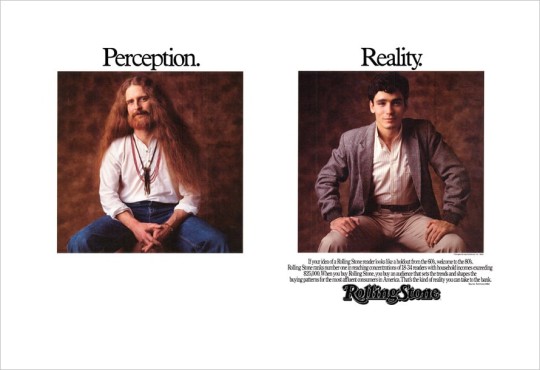
Image credits: Miguel Ferreira
The Californian Ideology
Being born in the Bay Area, the Californian Ideology incorporates all the controversies that have characterized the region from the 1960s onwards. Beginning as the inevitable clash between neoliberalist, bohemian counterculture and Republican squares, the conflict has developed into an unlikely reconciliation between hippies of San Francisco and yuppies of Silicon Valley. While the first were famous for their freewheeling spirit and humanitarian values, the second were very entrepreneurial and money-centered. What united these two ideologically polarized groups was the shared belief in the emancipating power of technologies and the Internet in particular. However, the groups understood the notion of freedom in two very different ways. Whereas hippies sought the freedom of expression, yuppies – the freedom of the market. Largely inspired by Marshall MacLuhan’s theories, hippies believed that the Internet’s role was to establish the electronic agora, a virtual space with unlimited free speech. Yuppies, on the other hand, longed for the creation of an electronic marketplace with unlimited possibilities to become “successful hi-tech entrepreneurs”.
Governmental intervention in private life and enterprises was seen as hostile by both groups (even though state funding played a crucial role in creating and developing the Internet) but, most importantly, hippies and yuppies were united because of their techno-determinist views (the fatalist belief that technologies shape society and the world as a whole). The New Left and New Rights ideologies eventually merged into the virtual class of independent, well-paid high-tech professionals that combined yuppies’ focus on the market economy and hippies’ free artisanship. One of the most notable representatives of the virtual class is Steve Jobs, the co-founder of Apple. Jobs came from a counterculture background, including his avid interest in Eastern spiritualism, and eventually became one of the most iconic Silicon Valley entrepreneurs.

Jerry Rubin is another example of a hippie-turned-yuppie. More precisely, Rubin, a co-founder of the Youth International Party (YIP), was a yippie and an influential icon for the counterculture radicals. However, as the counterculture movement was coming to an end in the 1970s, Rubin turned to more practical and traditional endeavors by working on Wall Street and creating networking clubs thus epitomizing a yuppie generation.

Jerry Rubin holding a photo of his 1960s look. Image credits: Jakob Renner
Another controversial aspect of the Californian Ideology is its attitude towards the master-slave relationships. This begins with their disputable role model - Jeffersonian democracy which, in turn, reflects the hypocrisy behind the Californian Ideology. Thomas Jefferson presented himself as a verbal proponent for civil rights whereas, in reality, he was a slave owner who focused on economic independence from Europe rather than the personal freedom of American citizens, particularly the black ones. Contemporary California is still characterized by racial fragmentation: the gated communities are divided for whites and poor downtown – for people of color. Cyberspace only escalates this problem and encourages the endurance of master-slave relationships. This all together creates a high-tech version of Jeffersonian democracy and the information apartheid consisting of the information-rich and the information-poor.
The Californian Ideology is a specifically vernacular phenomenon and Europe does not have to live by the West Coast rote. Instead, European governments have to take the lead in managing the Internet while ensuring that all citizens have equal access to all online services, and most importantly, to information.

0 notes
Text
Rethinking internet history
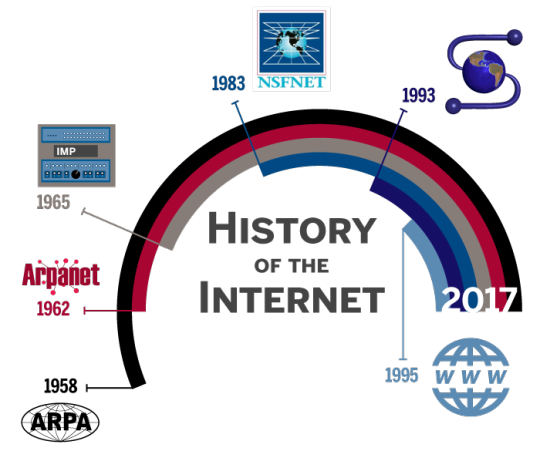
Image credits: Science Node
Rethinking internet history by James Curran is a chapter that provides a critical account regarding the history of the internet from its beginnings to today. The text lists five main factors that have shaped the internet: its foundation by the Advanced Research Projects Agency (ARPA), academic use, the counterculture origins, the European idea of public service, and commercialization.
The internet started in the midst of the Cold War in 1969 in the United States as ARPANET, developed by the Pentagon’s ARPA. Its main purpose was to resist an atomic attack from the USSR and its design reflected the military function of the ARPANET with the focus put on the decentralized network system and high protection of information. Those same features appeared to be useful to scientists and university officials who were the first to adopt the military invention. The internet was, however, divided in 1983 into its military and civilian units to ensure the highest security of military information. Still, the scientific approach to research and openness characterized the early stages of the internet.
The internet began to truly expand in the 1980s at which point its growth was largely influenced by the counterculture’s belief in the internet’s capacity to promote humanitarian and democratic values, and even more importantly, in its ability to transform the world. The first such idealistic networks were created by members of hippie communes and grassroots students. The internet also allowed the counterculture members to create online communities where users could break away from social restraints and explore their higher selves.
Another important factor in shaping the internet was the European idea of the internet for public service. This most notably manifested in the personality of Tim Berners-Lee who created the World Wide Web (WWW) while working at the European Organization for Nuclear Research (CERN). As opposed to earlier purposes of the internet, the Web was designed solely for society’s good as Berners-Lee wanted to come up with a totally open-access tool that would let anyone make use of the vast array of information and social interaction available on the internet.
Yet another decisive moment was the lifting of the ban on commercial use of the internet in 1991. This stimulated the creation of user-friendly web browsers and the internet seemed a very positive phenomenon back then. By the late 1990s, the internet became a truly international network thus marking the victory of democracy, freedom of thought and speech, and capitalism that came with the end of the Cold War.
Commercialization has profoundly changed the internet, though. While the most searched content on the internet became pornography and games, there is a number of other outcomes of the commercialization of the internet, namely the restriction of the internet’s initial openness because of intellectual property rights, the rise of surveillance mechanisms to track users’ online activity, and foisting mainstream information on internet users thus restricting freedom and diversity.
0 notes
Text
What Is Web 2.0?
Tim O’Reilly’s blog post What is Web 2.0. explains the key properties of Web 2.0 while comparing them with its Web 1.0. predecessor.
The dot-com bubble, caused by the surge of shares of Internet companies and the emergence of many new Internet companies, peaked in 2001 marking the beginning of a new era in Internet history called Web 2.0. The concept of Web 2.0, therefore, does not have strict boundaries but is instead associated with a number of core principles and practices that were universal for all companies to survive the dot-com crash. The first such principle is “The web as platform”, which circulates around ad serving while being free of charge as opposed to Web 1.0. companies like Netscape. For example, Google, one of the key Web 2.0. companies emerged as a free of charge service where users paid directly to individual services. Moreover, Google and other successful Web 2.0. companies that survived the dot-com bubble shared their reliance on data collection and database management, acting as “middlemen between users and their online experience”.

Image credits: Pinterest
The data-centered approach also roused competition between Internet companies. At the same time, they deployed the concept of collective intelligence (a process that is used for collective decision making) by mobilizing users into interaction with the web content thus letting them contribute to the content and the network itself. One of the examples of user engagement in Web 2.0. is folksonomy, a system that uses users’ tags as a mode of categorization that simplifies the process of finding information on a website. Instagram, for instance, is one of the networks that heavily relies on search tags as users can choose to narrow down their search by tags only.
The blogosphere is yet another important participatory feature of Web 2.0. which encourages peer-to-peer interaction between users that became possible by using dynamic links. Another main feature of Web 2.0. software is that it is a service as opposed to a product and, therefore, the focus is put on daily maintenance of software operations, treating users as co-developers, and constantly monitoring their responses to software’s features. A simple, user-friendly interface is an important visual characteristic of Web 2.0. software as well as software’s adaptability to various technical devices ranging from PC to portable gadgets.

Image credits: Whitehats
1 note
·
View note









